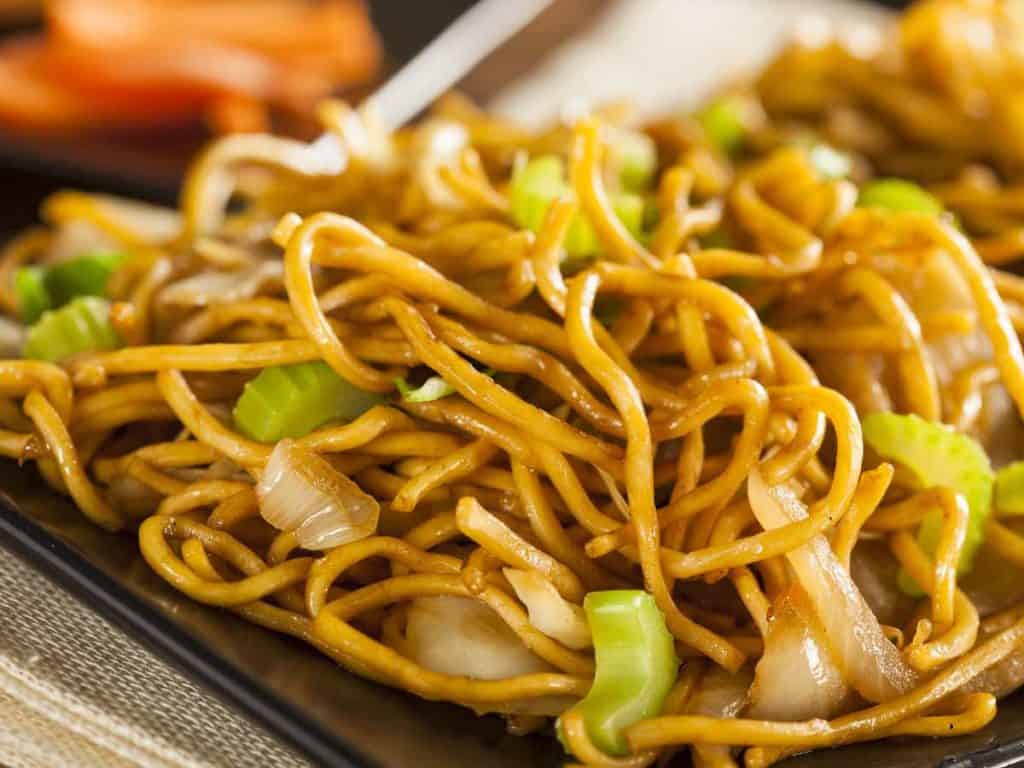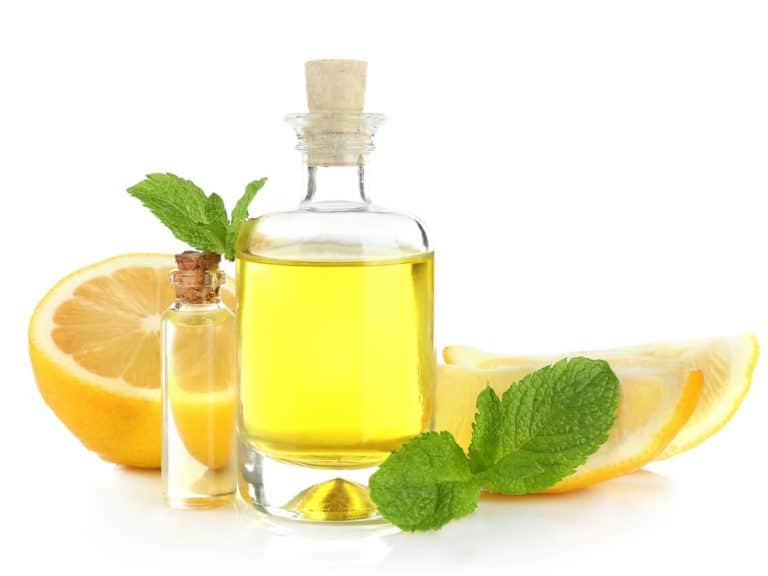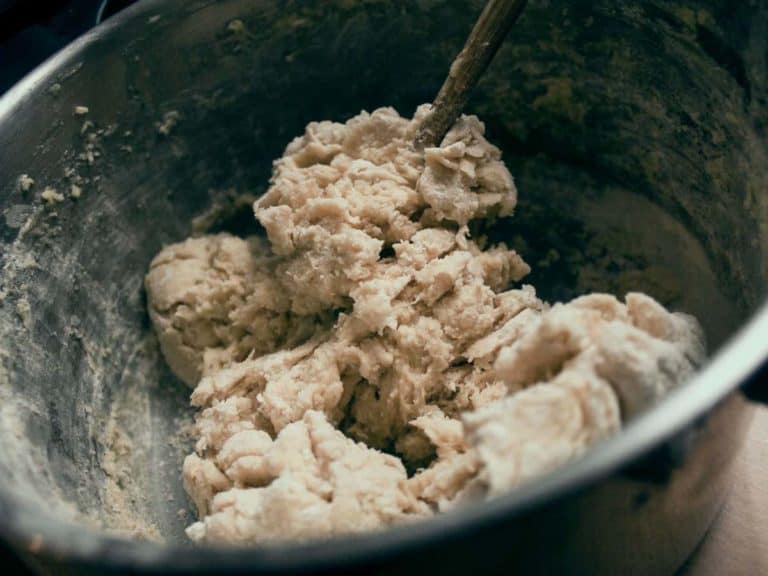Lo Mein vs. Mei Fun vs. Chow Fun vs. Chow Mein
People often assume that the main difference between lo mein and chow mein is the sort of noodles that are utilized.
It makes sense—all things considered, chow mein noodles are fresh while lo mein noodles are delicate, isn’t that so?
In reality, the principal qualification between these two well-known dishes lies in how the noodles are ready.
Mein or mian is just the Chinese word for noodles. Lo mein signifies “threw noodles,” while mei fun signifies “singed noodles.”
To know the distinction between these two Chinese dishes, you can learn a greater amount of this underneath:
Difference Between Lo Mein And Mei Fun
It is incorrect to compare Lo Mein and Mei Fun. Mei Fun means rice noodles. Lo Mein signifies method of cooking. In this case, Lo Mein means stirred noodles.
Mei Fun
Mei fun noodles are slight rice noodles. This formula utilizes dried rice noodles that are pre-cooked and afterward dried in the assembling interaction. All they need is a speedy pre-splashing before adding them to soups or pan-sears.
This Chicken Mei Fun (additionally in some cases spelled mai fun) formula is a fundamental home-style dainty rice noodle dish. If you’ve constructed a fundamental Chinese storeroom of only 10 fixings, you ought to have all you require to make it.
Lo Mein
Lo signifies ‘threw’. In this way, when we’re discussing lo mein, we’re talking, just, about ‘threw noodles’.
To make lo mein, cooked (bubbled and depleted) noodles are added to the wok after the veggies and protein have been cooked and thrown with the sauce. The noodles are daintily thrown with the veggies, just until they are warmed through.
Types of Noodles Used
Both lo mein and mei fun are made with Chinese egg noodles—wheat flour noodles with egg added. New egg noodles (ideally around 1/4-inch thick) are best for lo mein, while either new or dried can be utilized to make mei fun. In any case, the noodles should be relaxed in bubbling water before cooking.
Dried noodles are parboiled in bubbling water for 5 to 6 minutes before utilizing, while new egg noodles just should be bubbled for 2 to 3 minutes.
The specific measure of cooking time will rely upon the thickness of the noodles, so make certain to adhere to the bundle guidelines if accessible.
In any case, regardless of whether you’re working with new or dried noodles, the objective is to bubble them until they are simply cooked yet not very delicate (what the Italian’s call “still somewhat firm,” or “cooked to the tooth”).
If Chinese egg noodles aren’t accessible, Italian pasta, for example, fettucini or linguini makes a helpful substitute. A “no fuss” lo mein can be made by utilizing Ramen noodles with a flavor bundle.
Related Article: Difference Between Pasta and Noodles
How Are They Arranged?
One strategy for getting ready mei fun noodles is to sear them independently into a “noodle flapjack” and afterward pour the pan-seared meat and vegetables over the singed noodles. The mei fun noodles can likewise be sautéed with meat/poultry and vegetables.
With lo mein, the parboiled noodles are often added close to the furthest limit of cooking to warm through and throw with different fixings and sauce. Then again, the parboiled noodles might be thrown with a sauce and the sautéed fixings poured over.
Since the genuine star of any lo mein dish is the sauce, it’s not shocking that lo mein recipes often utilize more sauce than mei fun recipes.
Nutritional Differences Of Lo Mein And Mei Fun
Mei Fun is generally higher in fat because of the noodles being singed or pan-seared.
Something else, the dietary contrasts boil down to the sauce which can change uncontrollably relying upon the eatery. For certain eateries utilizing better or more fat hefty sauces than different cafés.
Frequently lo mein sauces are heavier/thicker than chow mein sauces which can mean more corn starch or other thickening specialists. Indeed, however, this progression from one eatery to another.
Difference Between Chow Fun And Chow Mein
Chow fun and chow mein are both famous noodle-based Chinese dishes. The two might have similarities, however, their unmistakable contrasts in noodles and cooking style make it simple to distinguish them. While chow fun is made with rice noodles, chow mein is made with egg noodles.
Whichever delightful noodle-based dish you choose to go with, you will in any case partake in probably the best flavors there are to offer. Soy sauce douses into every noodle, with crunchy bean sprouts and your decision of meat or veggies all blended and put into one bowl. These two dishes are considered creative Chinese food.
It might be difficult to pick which one is your top choice, as they offer a wide reach in contrast that your taste buds need to pick from. With noodles to the side, what truly separates these two from each other?

What Is Chow Fun?
The beginning of chow fun isn’t close to as clear as its particular meat flavor. This beautiful reasonable dish can be found at yum cha cafés, which are common faint total style Chinese eateries.
The primary fixing in chow fun is the sensitive rice noodles, which can break if not cooked as expected. All in all, how would you dominate the specialty of chow fun? Basic! You should dominate your pan-searing procedure and not fear a smoking hot wok.
When cooking in a wok, it is alluded to as “wok hei,” signifying “breath of the wok,” when you cook over high warmth, which is actually how you should deal with getting the best chow fun. Put on your broiler gloves in case need be, cause that wok will be sizzling.
Another first-rate ability is “pow wok.” When you are at a Chinese eatery and see the culinary specialists tossing the noodles noticeable all around without a spatula, you are watching them play out the fundamental procedure of “pow wok”.
On the off chance that you wouldn’t fret a couple of broken noodles, it doesn’t make any difference assuming you need to utilize a spatula — you will in any case get that incredible flavor. All you need is some meagerly cut hamburger steak, noodles (huo fun), soy sauce, oil, and ginger to bring that yum cha eatery feel to your own home.
What Is Chow Mein?
The beginning of chow mein is hard to pinpoint.
Taste Atlas says that it likely began in Northern China, which is a bit a long way from where chow fun started from. After being brought to America from China during the 1850s, it has remained an exemplary top choice. You can discover it at pretty much any neighborhood Chinese eatery.
Chow mein is made with egg noodles, which are a bit more modest than the rice noodles utilized in chow fun.
The assortment that can accompany these noodles alone makes it an independent dish, as you can get them signed or delicate!
Regardless of whether you need a “noodle hotcake” finished off with sautéed meat and veggies or everything blended into one skillet, you have choices with chow mein (through The Spruce Eats).
Chow mein (in Mandarin “chaos aura”) implies pan-seared noodles, so when you hear somebody say they are making sautéed food that is normally the thing they are making (through The Spruce Eats). In contrast to chow fun, you can turn into an expert gourmet specialist at chow mein without a wok. An enormous skillet or dish will pull of a similar degree of flawlessness as a wok will.
Open your bureau and pull out your number one major skillet and get to cooking. All you need is a few veggies like bok choy and mushrooms, soy sauce, shellfish sauce, ginger, and your noodles, obviously, and you will have a straightforward, yet filling “pan sear.”
Nutritional Value
They might be comparable some, yet the wholesome contrasts between chow mein and chow fun are faltering. Even though the two of them contain noodles, one is seared and the other isn’t, making one far more grounded than the other
What you gobble is dependent upon you, yet there are huge calorie contrasts between these dishes. Chow fun just has around 109 calories in 100 grams, while chow mein has 527 calories. An incredible distinction huh? That is because chow mein utilizes considerably more oil than chow fun.
Each cup of cooked rice noodles is around 192 calories and each cup of egg noodles is around 210 calories, says What Is The Best Rice Cooker.
You can generally change out one or the other dish with various noodles, yet like some other solid trade, the flavor will not be precisely the same. Incredibly enough, there are 12 grams of fat in egg noodles and just 1.2 in rice noodles!
Try not to allow the numbers to frighten you, however — there are a lot of approaches to add protein and veggies into each dish to make it to a greater degree an even supper. You can in any case partake in every sweet and appetizing nibble, quite possibly not very many!
Lo Mein Recipe
There are many advantages to making your #1 Chinese takeout feast at home — and that incorporates chicken lo mein! For one, you can add all the more new vegetables to your chicken lo mein, or use soy sauce with less sodium for a lighter adaptation.
To make it, you should simply pan-sear your chicken and veggies, add cooked egg noodles, and throw it all along with a straightforward sauce. Top with scallions, take care of the extras, and you’ll have modest, yummy eats for quite a long time.
Ingredients for 4 servings:
- 1 lb chicken breast(455 g), cut
- 1 teaspoon pepper
- 1 teaspoon salt
- 2 teaspoons sesame oil, isolated
- ¼ cup chicken broth(60 mL)
- 1 tablespoon soy sauce
- 1 tablespoon hoisin sauce
- 1 teaspoon cornstarch
- 1 tablespoon vegetable oil
- 2 cloves garlic, minced
- 1 tablespoon minced new ginger
- ½ cup shiitake mushroom, cut
- ½ cup onion, cut
- ½ cup carrot(61 g), cut
- ½ cup sugar snap peas(49 g), divided
- 4 servings cooked egg noodles
- 1 tablespoon scallions, slashed, for embellish
Preparation:
- In a medium bowl, season the chicken with pepper, salt, and 1 tablespoon of sesame oil. Blend and put away.
- In a different medium bowl, consolidate the chicken stock, residual tablespoon of sesame oil, soy sauce, hoisin sauce, and cornstarch. Blend completely and put away.
- Warm the vegetable oil in a wok or huge dish over medium-high warmth. Add the chicken and cook until presently not pink inside, 3-4 minutes. Eliminate the chicken from the skillet and put it away.
- Add the garlic and ginger to the container and cook until fragrant.
- Add the mushrooms, onions, carrots, and sugar snap peas. Sautéed food until the vegetables are delicate.
- Return the cooked chicken to the skillet and add the cooked egg noodles and held sauce. Cook for 3 minutes, until everything is all around covered in the sauce
- Serve embellished with scallions. Then enjoy it.
Mei Fun Recipe

This Chicken Mei Fun formula (AKA mai fun) is an essential, adaptable, home-style Chinese rice noodle dish. Utilize whatever vegetables you have available to make it!
Ingredients:
For the rice noodles
- 7 ounces dried meager rice vermicelli noodles
- 1 teaspoon vegetable oil
- ½ teaspoon dim soy sauce
For the chicken
- 7 ounces chicken bosom
- 1 teaspoon cornstarch
- 1 tablespoon water
- 1 ½ teaspoon shellfish sauce
- 2 teaspoon Shaoxing wine
- ¼ teaspoon white pepper
- 1 squeeze five flavor powder
- 1 teaspoon vegetable oil
For the remainder of the dish:
- 2 cuts ginger
- 4 to 5 little shallots
- 1 medium carrot
- 5 ounces cabbage
- 3 scallions
- 3 tablespoons vegetable oil
- 1 ½ tablespoon light soy sauce
- ½ teaspoon sesame oil
- ¼ teaspoon white pepper
- Salt to taste
- 2 tablespoons water
Preparation:
- Douse the dried rice noodles according to the directions on the rear of the bundle. To test whether they’ve been doused enough, take a noodle and bite on it to ensure it’s as of now not hard/dry. Channel completely, shaking off the noodles to dispose of overabundant water.
- In an enormous bowl, blend the rice noodles in with 1 teaspoon of oil and ½ teaspoon dull soy sauce until equally covered. Put away.
- Add the chicken to a medium bowl, alongside the cornstarch, water, shellfish sauce, Shaoxing wine, white pepper, five zest, and vegetable oil. Marinate for 20 minutes.
- In the interim, set up the ginger, shallots, carrot, cabbage, and scallions. Have all that all set before you turn on the oven.
- Warm your wok over high warmth. Add 3 tablespoons oil, trailed by the ginger and chicken. Pan-fried food until the chicken is simply cooked through. Add the shallots, and pan-fried food for 10 seconds. Add the cabbage and carrots, and pan-fried food for an additional 30 seconds.
- Season everything with 1½ tablespoons light soy sauce, ½ teaspoon sesame oil, and ¼ teaspoon white pepper. Blend well.
At long last, add the pre-arranged rice noodles alongside the scallions. Turn the warmth down to medium and pan-fried food all that together to warm the noodles through and circulate the chicken and vegetables. Salt to taste.
- On the off chance that you like more still somewhat firm noodles, you can serve right away. On the off chance that you like milder noodles, add 2 tablespoons of water to the wok, cover, and cook briefly over low warmth before serving.
Chow Fun Formula
Ingredients:
For the hamburger marinade
- 8 ounces flank steak
- ¼ teaspoon heating pop
- 1 teaspoon cornstarch
- 1 teaspoon soy sauce
- 1 teaspoon vegetable oil
For the remainder of the dish
- 12 ounces new wide noodles
- 3 tablespoon vegetable oil
- 4 scallions
- 3 flimsy cuts of ginger
- 2 tablespoons Shaoxing wine
- ½ teaspoon sesame oil
- 2 teaspoons dim soy sauce
- 2 tablespoons standard soy sauce
- ⅛ teaspoon sugar
- Salt and white pepper
- 4 to 6 ounces new mung bean sprouts
Directions:
- Consolidate the hamburger and marinade fixings and marinate for around 60 minutes.
- Some new rice noodles come as huge sheets, while others are now cut. If you have the sheets, cut the rice noodles so they’re around 1 inch wide. On the off chance that the noodles are extremely solid and remained together, heat a wok brimming with water to the point of boiling, and add the noodles. Whiten them for 30 seconds to release. Move to an ice shower and channel altogether.
- Warm your wok over high warmth until smoking, and add 1/2 tablespoons of oil to cover the wok. Add the meat and burn until cooked. However long your wok is sufficiently hot, the meat shouldn’t stick. Put away. Add 1/2 tablespoons more vegetable oil to the wok. Add the ginger to implant the oil with its rich flavor for around 15 seconds. Add the scallions.
- Spread the noodles uniformly in the wok and sautéed food on high for around 15 seconds. Add the Shaoxing wine around the border of the wok.
- Then, add the sesame oil, soy sauces, a touch of sugar, and the singed meat. Pan-fried food, ensuring your metal wok spatula scratches the lower part of the wok. Lift the noodles in a vertical movement to blend well and coat them equally with the sauce.
- Add a bit of salt and white pepper to (taste the noodles before adding salt). Add the bean fledglings and sautéed food until they are simply delicate. Serve!
Tips and Notes:
A helpful hint is to freeze the meat before cutting until it’s firm yet not strong. This makes cutting the meat a lot simpler!
Important: Heat ought to stay as high as conceivable consistently when cooking this dish.





![How To Store Matzo Balls [With Recipes]](https://foodwine.com/wp-content/uploads/matzo-balls-235150240-768x576.jpg)